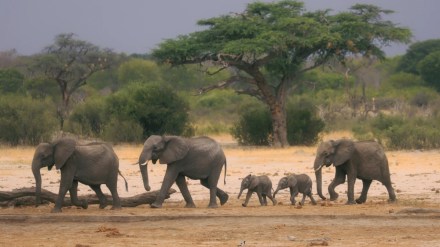In order to feed their starving population, Zimbabwe and Namibia have announced that they would be slaughtering hundreds of wild elephants and other animals amid severe drought conditions in the southern African countries.
Zimbabwe said it would allow the slaughtering of 200 elephants and distribute their meat among the needy communities. Meanwhile, Namibia is slaughtering over 700 wild animals, including 83 elephants, as a part of a plan announced three weeks ago.
Tinashe Farawo, a spokesperson for the Zimbabwe National Parks and Wildlife Management Authority, stated that permits would be granted to communities in need for elephant hunting, and the agency would also cull a portion of the total quota of 200 elephants.
“We will start culling as soon as we have finished issuing out permits,” Farawo said. Farawo explained that the elephants will be removed from regions where their population has become unsustainable. The hunting will occur in areas like Hwange National Park in the country’s arid west, where escalating temperatures have intensified competition for limited food and water resources between humans and wildlife.
Farawo noted that Hwange National Park is home to over 45,000 elephants but can currently sustain only about 15,000. According to park officials, Zimbabwe’s total elephant population of around 100,000 is double the capacity that the country’s national parks can support.
Last month, the Namibian government authorised the culling of 723 animals, which includes 83 elephants, 30 hippos, 60 buffalo, 50 impalas, 300 zebras, and 100 elands, among others. These animals will be culled from five of Namibia’s national parks, where the government is also aiming to decrease the elephant population due to ongoing conflicts between humans and wildlife.
Botswana, located between Zimbabwe and Namibia, has the world’s largest elephant population at 130,000. Unlike its neighboring countries, however, Botswana has not proposed culling its elephants to address local needs.
(With AP inputs)
